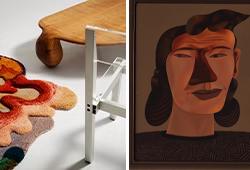A Tibeto-Chinese gilt bronze figure of eleven-headed Avalokiteshvara, 19th Century
The standing deity with eight arms and eleven heads, arranged in three tiers, surmounted by one head with a wrathful countenance topped by a small head of Amitabha, the principal hands held in anjalimudra, the figure adorned with jewellery with a deer skin draped over the left shoulder, clad in a shawl and a dhoti with chased borders, all raised on an elaborate lotus flower base. Height 29 cm.
Damage by one arm, attributes missing, later center piece by the lower coronet row. Wear.
Alkuperä - Provenienssi
Aquired by Nils Hartog (1888-1952). A Swedish Merchant who lived in Japan during the 1920's. He traded in porcelain and weapons. During the years they made several jouneys around Asia and visited Peking, Shanghai, Korea and other places. Enclosed here are some images from his travels.
Kirjallisuus
The eleven-headed form of the popular bodhisattva Avalokiteshvara has been revered in China from the late Ming dynasty through the Qing. The distinctive lotus base, consisting of bands of raised lotus flowers skilfully cast in repoussé, can be seen on three other Imperial Kangxi gilt-bronze figures of Amitayus, Vajradhara and Green Tara, all from the Qing court collection and preserved in the Palace Museum, Beijing, illustrated in The Complete Collection of Treasures of the Palace Museum: Buddhist Statues of Tibet, Hong Kong, 2008, pp. 239-241, pls. 228-230.


















































































